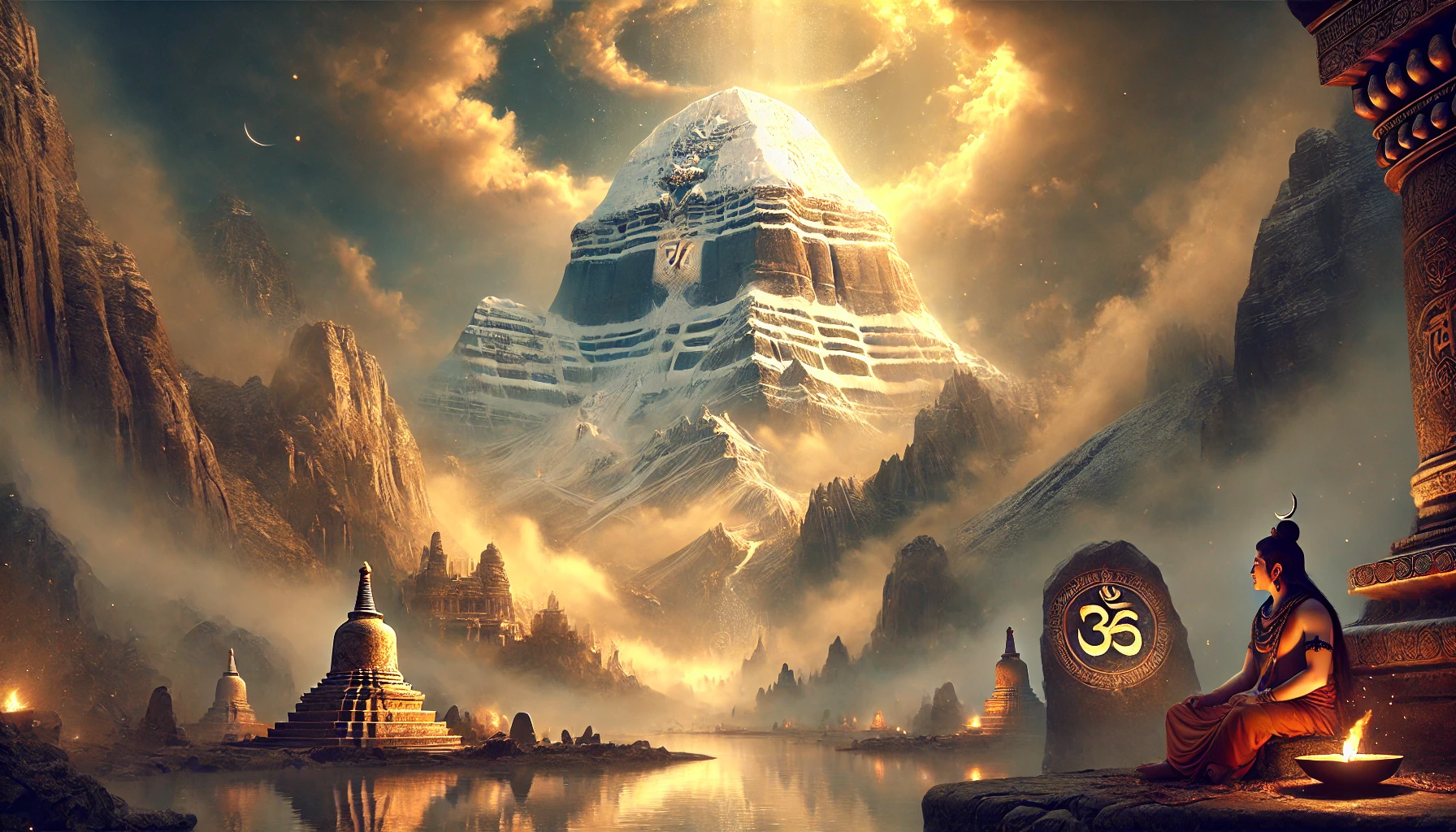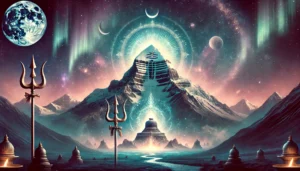
Unsolved mysteries of Kailash Parvat
Mysteries of Kailash Parvat: The Abode of Shiva
Mount Kailash, revered as the mystical abode of Lord Shiva, holds a special place in the spiritual geography of the world. Rising majestically to an altitude of 6,638 meters, this peak is part of the Trans-Himalayan range in the Tibet Autonomous Region of China. Unlike other mountains that have been conquered by climbers, Mount Kailash remains untouched, guarded by sacred traditions and unexplained phenomena that challenge human understanding.
Across centuries, Mount Kailash has drawn pilgrims, explorers, and researchers alike, each seeking to unravel its secrets. While for believers it represents the ultimate source of divine energy, for skeptics and scientists, it is a puzzle that defies logical explanation. Here, we delve deeper into the mysteries of Kailash Parvat and its profound connection to spirituality, science, and the cosmos.
The Sacred Significance of Kailash Parvat
For billions of devotees across different faiths, Mount Kailash is more than just a mountain—it is the epicenter of creation and spiritual enlightenment. Its importance transcends religions:
Hinduism: Mount Kailash is regarded as the residence of Lord Shiva, the Adiyogi (first yogi), and his consort, Goddess Parvati. It is the place where Shiva meditates eternally, radiating cosmic energy to sustain the universe. Hindus believe that circumambulating the mountain washes away all sins and leads to liberation (moksha).
Jainism: Known as Ashtapada in Jain texts, Mount Kailash is the site where the first Tirthankara, Rishabhdeva, attained nirvana. It is one of the holiest pilgrimage sites for Jains, symbolizing the path to ultimate liberation.
Buddhism: To Tibetan Buddhists, the mountain is known as Kang Rinpoche, meaning “Precious Jewel of Snow.” It is revered as the abode of Demchok (Chakrasamvara), a deity representing supreme bliss. The Kailash region is also associated with Milarepa, a Tibetan poet and yogi who meditated in its caves.
Bon: For followers of the ancient Bon religion, Mount Kailash is the axis mundi, or the center of the world. They believe it to be the seat of Sipaimen, the sky goddess, and a sacred site where the physical and spiritual worlds converge.
Table of Contents
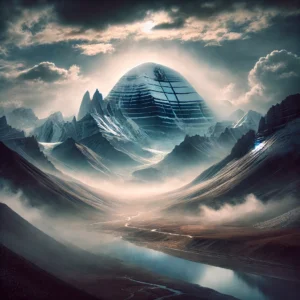
Unsolved mysteries of Kailash Parvat
The Unexplained Phenomena Around Mount Kailash
- The Mysterious Pyramid Structure
One of the most striking features of Mount Kailash is its symmetrical, pyramid-like shape. Unlike other mountains that have irregular forms, Kailash appears almost geometrically perfect. This has led some researchers to speculate that it could be an ancient, man-made pyramid or a natural structure imbued with divine or extraterrestrial significance.
Ancient texts often describe Kailash as “Meru,” the axis of the world. Its alignment with cardinal directions and its resemblance to other sacred pyramidal structures, such as the Great Pyramid of Giza, have sparked debates about its connection to a global network of sacred sites.
- The Forbidden Summit
Despite modern climbing technologies, no one has ever successfully scaled Mount Kailash. Climbers who have attempted to ascend the mountain have reported mysterious phenomena, such as sudden weather changes, disorientation, or an overwhelming feeling of being unwelcome.
Legend states that it is impossible for humans to reach the summit because it is protected by divine forces. Tibetan Buddhists and Hindus alike believe that disturbing the mountain’s sanctity would invoke dire consequences. Interestingly, even mountaineers like Reinhold Messner, known for conquering Everest, have refrained from attempting Kailash, citing its spiritual significance.
- Time Distortions and Rapid Aging
One of the most perplexing phenomena associated with Mount Kailash is the reported distortion of time. Travelers in the region have claimed to experience time anomalies, such as missing hours or accelerated aging. Some pilgrims have noticed their hair and nails growing faster than usual, as if time were speeding up in the mountain’s vicinity.
This has given rise to theories that Kailash may be a powerful energy vortex, affecting time and space in ways we do not yet understand.
- The Lakes of Opposing Energies
At the base of Mount Kailash lie two contrasting lakes—Lake Mansarovar and Lake Rakshastal.
Lake Mansarovar: A freshwater lake with a near-perfect round shape, it is considered holy and represents purity and light. Hindus believe it was created by Lord Brahma and is the site where sages and yogis meditate to attain higher states of consciousness.
Lake Rakshastal: A crescent-shaped saltwater lake, it is seen as a symbol of darkness and negative energy. Legends suggest it is associated with Ravana, the demon king from the Ramayana. Despite their proximity, the waters of these two lakes do not mix, reflecting their contrasting spiritual energies.
- Parikrama: The Transformative Journey
The 52-kilometer circumambulation of Mount Kailash, known as Kailash Parikrama, is a spiritual journey undertaken by pilgrims from around the world. This trek is believed to cleanse one’s karma and lead to liberation.
Interestingly, many pilgrims report experiencing heightened states of consciousness during the journey. Some describe visions of divine beings, while others feel an inexplicable sense of euphoria or weightlessness.
- Celestial Lights and Sounds
Visitors to Mount Kailash often report seeing unexplained lights or hearing celestial sounds, such as chants or the resonance of bells. While skeptics attribute these phenomena to natural causes, such as electromagnetic activity, believers view them as manifestations of the divine energy that envelops the mountain.
- Alignment with Sacred Sites
Mount Kailash is said to be part of an ancient network of sacred sites, aligned with monuments like the Great Pyramid of Giza and Stonehenge. This alignment has fueled theories that Kailash may serve as a node in a global energy grid, channeling and amplifying cosmic forces.
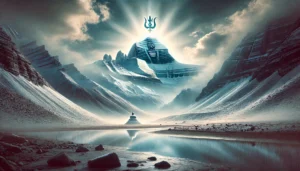
Unsolved mysteries of Kailash Parvat
Scientific Perspectives on Kailash’s Mysteries
While spirituality dominates the discourse around Mount Kailash, scientists have made attempts to explain its mysteries:
Geological Formation: The pyramid-like structure of Mount Kailash may be a result of unique geological formations over millions of years. However, its near-perfect symmetry remains unexplained.
High-Altitude Effects: The rapid aging phenomena reported near Kailash might be attributed to the effects of high altitude on the human body, including increased cellular activity.
Energy Vortex: Some researchers speculate that Mount Kailash could be a natural energy vortex, causing distortions in electromagnetic fields and affecting human perception of time and space.
Despite these efforts, many questions remain unanswered, leaving room for speculation and wonder.
Kailash as the Gateway to the Divine
For those who journey to Mount Kailash, it is not merely a physical destination but a transformative spiritual experience. The mountain’s mystique lies in its ability to inspire awe, devotion, and introspection. Whether one views it through the lens of faith or science, Mount Kailash remains a profound symbol of humanity’s quest for the divine.
Conclusion
Mount Kailash, the abode of Lord Shiva, stands as an eternal enigma, bridging the physical and metaphysical worlds. Its mysteries—ranging from time distortions to its pyramid-like shape—continue to captivate scientists, pilgrims, and seekers alike.
Ultimately, Mount Kailash reminds us that some places are beyond human comprehension, urging us to approach them with reverence and humility. Whether as a sacred site, a geological wonder, or a cosmic axis, Mount Kailash will forever remain one of the most mystical places on Earth, a true gateway to the infinite.
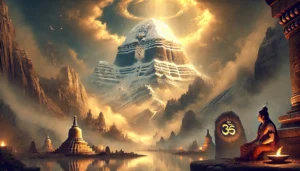
Unsolved mysteries of Kailash Parvat
FAQs on “The Enigma of Kailash Parvat: Unraveling the Mystical Secrets of Shiva’s Abode”
- What makes Mount Kailash unique and mysterious?
Mount Kailash is an enigmatic and sacred site revered in multiple religions, including Hinduism, Buddhism, Jainism, and Bon. Its untouched summit, perfect geometric symmetry resembling a pyramid, and reports of strange phenomena, such as unexplained magnetic fields and rapid aging effects on nearby travelers, make it a global wonder.
- Why is Mount Kailash regarded as the abode of Lord Shiva?
In Hindu mythology, Mount Kailash is the eternal abode of Lord Shiva, the destroyer and transformer in the Hindu trinity. It is described as a mystical domain where Shiva resides in deep meditation, spreading cosmic energy and blessing devotees with spiritual insights. Ancient scriptures like the Shiva Purana narrate Kailash as a space of transcendence where divine and human realms intersect.
- Has anyone successfully climbed Mount Kailash?
Climbing Mount Kailash is strictly forbidden out of respect for its sacredness. Historically, there have been attempts, but no climber has succeeded. Legends suggest divine intervention or spiritual energy prevents anyone from reaching its peak. Tibetan traditions believe only spiritually enlightened beings or deities can scale Mount Kailash.
- What are some of the unexplained phenomena around Mount Kailash?
Several mysteries surround Mount Kailash, including:
Rapid Aging: Pilgrims report experiencing accelerated nail and hair growth during their stay, equivalent to two weeks of growth in just 12 hours.
Magnetic Anomalies: Compasses behave erratically, hinting at unusual magnetic fields.
Alignment with Ancient Sites: The mountain aligns with sacred structures like the Great Pyramid of Giza and Stonehenge, leading to theories about its connection to an ancient global energy grid.
Mysterious Lights and Sounds: Witnesses have reported inexplicable lights, booming sounds, and visions of spiritual entities.
- How does Mount Kailash relate to other faiths?
Mount Kailash holds immense significance across various religions:
Hinduism: It is the residence of Lord Shiva and a source of spiritual energy.
Buddhism: Known as Mount Meru, it represents the center of the universe, surrounded by cosmic mandalas.
Jainism: It is believed to be the site where Rishabhadeva, the first Tirthankara, attained Nirvana.
Bon: The mountain is central to Bon cosmology, symbolizing the seat of spiritual power and harmony.
- What is the significance of Lake Manasarovar near Kailash?
Lake Manasarovar, situated at the base of Mount Kailash, is one of the highest freshwater lakes in the world and is revered as sacred. Hindu mythology describes it as a creation of Lord Brahma, offering purification to those who bathe in its waters. It is also believed that drinking its water leads to spiritual liberation, while meditating by the lake brings divine visions.
- Is there scientific evidence supporting the mysteries of Mount Kailash?
Scientists have attempted to explain some phenomena scientifically, such as the geological structure of Mount Kailash contributing to its pyramid-like shape or environmental factors influencing magnetic anomalies. However, the rapid aging effect, spiritual visions, and its mystical alignment with global monuments remain largely unexplained, fueling its aura of mystery.
- Can people visit Mount Kailash?
Yes, Mount Kailash can be visited as part of the Kailash Mansarovar Yatra, a pilgrimage journey undertaken by thousands of devotees annually. The pilgrimage involves circumambulating the mountain (Parikrama or Kora) without climbing it. While the trek is physically challenging due to the high altitude and rugged terrain, it is deeply rewarding for those seeking spiritual fulfillment.
- What is the spiritual significance of circumambulating Mount Kailash?
Circumambulating Mount Kailash is believed to cleanse one’s sins and bestow spiritual enlightenment. Hindus and Buddhists perform the 52-km Parikrama in a clockwise direction, while Jains and Bon followers take the anti-clockwise route. Completing the Parikrama is equivalent to experiencing multiple lifetimes of spiritual progress.
- How long does it take to complete the Kailash Parikrama?
The Parikrama usually takes three days to complete. The journey involves crossing the Dolma La Pass, the highest point at 5,630 meters, and requires physical and mental endurance. Pilgrims often describe the trek as a test of faith and inner strength.
- Are there any myths or legends associated with Mount Kailash?
Numerous legends surround Mount Kailash:
It is said to be the axis mundi, or the cosmic pillar connecting heaven and earth.
In Hindu mythology, it is associated with the Samudra Manthan (churning of the ocean), where Mount Kailash symbolizes balance and equilibrium.
Tibetan texts speak of celestial beings guarding the mountain, making it inaccessible to ordinary mortals.
Jain scriptures describe it as the site where the soul attains ultimate liberation.
- What precautions should travelers take while visiting Mount Kailash?
Travelers should prepare for high-altitude conditions and harsh weather. Acclimatization is crucial to avoid altitude sickness, and physical fitness is essential for the strenuous trek. Carrying warm clothing, proper trekking gear, and sufficient food and water is highly recommended. Additionally, obtaining necessary permits and traveling with experienced guides is essential for safety.
- Is Mount Kailash mentioned in ancient scriptures?
Yes, Mount Kailash is extensively mentioned in ancient Hindu scriptures like the Vedas, Puranas, and the Mahabharata. It is also referenced in Buddhist texts such as the Kangyur and Tengyur and Jain literature like the Kalpasutra. These texts describe Kailash as a cosmic center of energy and a site of divine connection.
- What role does Mount Kailash play in meditation and spiritual practices?
Mount Kailash is considered an energy vortex, making it an ideal place for meditation. Sages and monks have meditated there for centuries, believing it accelerates spiritual awakening. Even today, pilgrims report profound inner peace and heightened spiritual awareness while performing rituals or meditating around the mountain.
- Why is Mount Kailash referred to as the ‘Center of the World’?
Mount Kailash is often called the “Center of the World” due to its spiritual, geographical, and mythological significance. Its location aligns with sacred sites worldwide, and ancient texts describe it as the axis around which the universe revolves. This concept ties closely to its representation as Mount Meru in various traditions.
- What are the challenges of visiting Mount Kailash?
Visiting Mount Kailash is not easy. The high altitude, freezing temperatures, and rugged terrain make the journey physically demanding. Additionally, political restrictions and limited accessibility to the Tibetan plateau add logistical challenges. Pilgrims often need to undertake extensive preparation and endure significant hardships to complete the journey.
- How does modern science view Mount Kailash’s mysteries?
Modern science acknowledges some of the geological features and environmental factors of Mount Kailash, such as its unique rock formations and high-altitude effects. However, the more mystical aspects, including rapid aging and magnetic anomalies, remain unverified, leaving them in the realm of spiritual belief.
- Are there any ongoing research studies on Mount Kailash?
While research on Mount Kailash is limited due to its remote location and restricted access, some geologists and historians have studied its alignment with ancient monuments and possible links to early civilizations. However, its spiritual and mystical aspects continue to intrigue researchers and pilgrims alike.
- Can Mount Kailash be viewed as a symbol of harmony among religions?
Yes, Mount Kailash serves as a unifying symbol for multiple faiths, reflecting shared values of reverence, spirituality, and cosmic connection. Despite theological differences, the mountain inspires devotees worldwide to seek inner peace and transcendence.
- Why is Mount Kailash considered ‘inaccessible’?
Beyond its physical remoteness, spiritual traditions describe Mount Kailash as a realm beyond ordinary human reach. Legends suggest it is protected by divine energies, ensuring its sanctity remains intact. This belief reinforces the idea that Kailash is a sacred space meant for spiritual connection rather than conquest.
Summary
Mount Kailash, revered as the sacred abode of Lord Shiva, holds immense spiritual significance in Hinduism, Buddhism, Jainism, and Bon. Beyond its religious importance, the mountain is surrounded by mysteries and unexplained phenomena that baffle scientists and explorers alike. Stories of divine energy, magnetic anomalies, and the impossibility of scaling its peak add to its enigma. Pilgrims and researchers often report unusual experiences, such as rapid aging and heightened spiritual awareness, during their journey around the mountain. This article delves into these phenomena, examining the legends, scientific perspectives, and the spiritual aura that make Mount Kailash a timeless symbol of mystery and devotion.
Related Articles
- The Tridevi: Lakshmi, Saraswati, and Parvati – Their Roles and Powers
- “Divine Creatures of Ancient Indian Scriptures: Exploring the Role of Animals in the Vedas, Puranas, and Mahabharata”
- Nature and Spirituality: Exploring the Sacred Essence of the Himalayas, Ganga, and Other Natural Wonders”
- “Reviving the Gurukul System: Relevance and Lessons for Modern Education”
- “Exploring Greek and Indian Mythology: Similarities Between Greek and Indian Mythology “
- “Embracing Sattvic Living: Harmonizing Mind, Body, and Soul Through Food and Lifestyle”
- “Charity and Prosperity: Exploring the Concept of Daan and Its Financial Relevance in Modern Life”
- How to Build an Eco-Friendly Home Inspired by Vastu Shastra
- Comparison of Ancient and Modern Sports: How Traditional Sports Have Influenced Contemporary Games
- “Timeless Lessons from Ancient Tales: Linking Samudra Manthan and Ganga’s Descent to Modern Ecological Challenges”
- “Reviving Sanskrit: How AI is Preserving Ancient Languages for the Future”
- “Mathura: The Sacred Land of Lord Krishna’s Divine Leelas”
- Investing for Future Generations: Lessons from Indian Traditions on Legacy Building and Wealth Preservation
- “Ancient Indian Wisdom: Timeless Lessons for Tackling Today’s Climate Crisis”
- “Artificial Intelligence and Spirituality: Transforming Ancient Practices for the Modern World”
- “Gold and Real Estate in India: Timeless Assets Shaping Financial Strategies”
- “Divine Feminine Power in Hindu Mythology: The Legends of Durga, Saraswati, and Lakshmi”
- “Divine Beings of Sanatan Dharma: The Spiritual Significance of Sacred Animals in Hinduism”
- “Symbolism in Mythological Art: Unlocking Hidden Meanings in Ancient Temple Carvings”
- “Exploring Technological Advancements in Ancient India and Civilizations: Vimana, Metallurgy, & Water Management systems”
- Unveiling the Mysteries: Ancient Temples of Sanatan Dharma , Mysterious Temples of India
- “The Scientific Knowledge of Sanatan Dharma: Ancient Wisdom Meets Modern Science”
- Ancient Indian Sports and Games: Celebrating a Legacy of Skill, Strength & Strategy”
- “Exploring the Cosmic Link: The Connection Between Astronomy and Vedic Astrology”
- The Power of Sanskrit: Unlocking the Divine Language of the Gods
- “The End of Kaliyuga: A Sanatan Insight into the World’s Final Chapter”
- Explore more articles on Prachin Sanatan Yuga.
Unsolved mysteries of Kailash Parvat Unsolved mysteries of Kailash Parvat Unsolved mysteries of Kailash Parvat Unsolved mysteries of Kailash Parvat Unsolved mysteries of Kailash Parvat
Kailash Parvat Kailash Parvat Kailash Parvat Kailash Parvat Kailash Parvat Kailash Parvat Kailash Parvat Kailash Parvat Kailash Parvat Kailash Parvat Kailash Parvat Kailash Parvat Kailash Parvat Kailash Parvat Kailash Parvat Kailash Parvat Kailash Parvat
